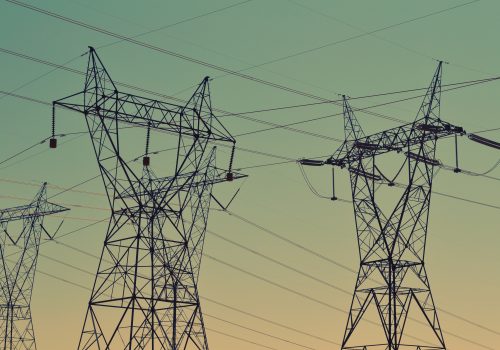India is now the world’s most populous country. Can its economy keep up?
The United Nations (UN) estimates that India has become the world’s most populous country, surpassing China for that dubious distinction. This is bureaucratic confirmation of an inevitable transition as China’s economic growth and family planning policies have slowed its population growth to near zero in recent years, even as India’s population grows. While India and China have long been the sole members of the billion-plus population club, and with no other states in striking range, the UN’s announcement is both the making of a trivia question and an occasion to consider again the reality that the twenty-first century is Asia’s. But bigger populations come with bigger problems. As the United States and other Western powers come to grips with their relative decline, hitching their star to India will not be a straightforward proposition.
Why does population matter for global politics? After all, a Malthusian perspective would warn that more mouths to feed will strain a country’s capacity to provide for its citizens, and that failure to do so will engender political instability and economic impoverishment. Yet, with all due respect to the reverend, the empirical record of the past two centuries makes clear that the opposite is true. Large populations fueled the Industrial Revolution and the incredible economic growth enjoyed by the West. While vast inequalities persist—even grow—global economic productivity has expanded unimaginably over the period, allowing more people to live longer, healthier lives than ever before.
If you are bullish on India’s prospects in the coming century, as indeed it appears the consensus in US government circles is, then India’s rise to number one on the population charts is evidence that its best days are yet ahead. If that is the case, then by pursuing a strategic partnership with India, above all other considerations, the United States is backing the right horse to maintain its own relevance. It is commonplace for policymakers to laud India’s “demographic dividend,” which is a wonky shorthand for the fact that India’s huge population is also a young population, with 52 percent of its citizens under the age of thirty. Young people are a valuable resource for any economy. They are in the prime of their working lives, they are avid consumers and fuel the larger economy, and eventually they will have children of their own and buy even more stuff. Countries in Western Europe, as well as Japan and increasingly China, are increasingly skewing older and facing tighter labor markets and greater pressures on public-sector entitlement programs such as pensions (see the turmoil in France) or health care. But India’s younger population promises a huge—and growing—consumerist middle class and a seemingly unending supply of college graduates itching to enter the workforce.
There is, however, a problem. There are too few jobs in India to absorb these aspiring workers. Some economists have labeled India’s record “jobless growth.” The numbers are stark and sobering. To absorb the demand for employment, the Indian economy must create over a million new jobs each month. It presently is creating well fewer, and job creation is slowing even further. Resentment over poor job prospects begets frustration that spills into violence. Nor is this a problem that can be solved by pulling on available policy levers such as India’s oft-maligned labor laws.
The challenge is more systemic and structural, and it lies in the absence of a vibrant manufacturing sector that can absorb the millions of young people entering the economy each year. Rapid population growth is a relatively modern phenomenon globally, and the historical record makes clear that industrial manufacturing was the key to absorbing labor productively. Indeed, the vast reserve army of cheap labor enabled much of the Industrial Revolution as low-wage workers abandoned their farms and took their places on the assembly lines of Manchester and Detroit. India, however, skipped this mass industrial revolution stage. Its growth has been fueled by a booming services sector that specializes in information technology. As China established itself as the factory of the global economy, India aspired to be its back-office business processing hub. While this stimulated the growth of a robust middle class of educated English-speaking office workers, it laid bare the lack of similar opportunities for the tens of millions of young job seekers competing for scarce white-collar positions.
To absorb the demand for employment, the Indian economy must create over a million new jobs each month.
Ashoka Mody, a Princeton economist, argues that the failure of India’s education system is to blame for the current mess. Other culprits include the government’s hesitant and often contradictory approaches to foreign investment and international trade, and its protectionist tendencies that stifle innovation and prevent India from playing a meaningful role in global supply chains in the way that China, Vietnam, Malaysia, and even Bangladesh have. The current moment of hostility between Beijing and Washington, and the ensuing misguided espousal of decoupling, China+1, near-shoring, friend-shoring, and re-shoring policies emanating from Washington appears to offer a glimmer of hope for India’s beleaguered manufacturing sector. Manufacturing could shift from China to India as the United States and others look to reduce dependence on Chinese exports and supply chains. But it is unclear that New Delhi will be able to seize the advantage at a scale required to meet the job needs of its young population. Doing so would require political courage to embrace structural economic reforms and the challenges of global trade to force India’s businesses to be genuinely competitive internationally. If India could manage this, it might be able to harness its population to foster the high rates of economic growth required to make up lost ground on China, though this past lost decade of growth has arguably already set that goal beyond reach.
India’s demographic dividend is thus a demographic time bomb, papered over for now by the success of its information technology sector, largely untapped middle class, rising geopolitical centrality, and masterful public relations by its cheerleaders. But a failure to harness the energies of the world’s largest population is not just a tremendous missed opportunity. It is a millstone weighing down India’s future. A frustrated, underemployed youth population turns restive quickly, and the government’s tactic of distracting it with majoritarian populism and anti-minority scapegoating will not succeed forever. Worse, it will erode the one undeniable achievement of independent India: the building of a diverse, secular, democratic republic against all odds.
The backsliding has already begun: India is no longer rated a liberal democracy by reputed international organizations, and public opinion surveys indicate that the Indian public’s commitment to democratic norms is worryingly shallow. For the United States and its allies, who have been reminded time and again of just how little influence they wield over India’s foreign policy, these trends should ring alarm bells. For the first time since the era of colonialism, the majority of the world’s population no longer lives in liberal democracies. Indeed the world’s two largest countries, accounting for more than a quarter of all human beings alive today, are actively illiberal and working against the international economic order so painstakingly erected after World War II to cement Western hegemony. If demography is destiny, then the UN’s announcement, while confirming what many knew to be inevitable, still changes everything.
Irfan Nooruddin is the senior director of the Atlantic Council’s South Asia Center and the Hamad bin Khalifa Al Thani Professor of Indian Politics in the School of Foreign Service at Georgetown University.
Further reading
Mon, Mar 27, 2023
The future of women in India: Barriers, facilitators and opportunities
Issue Brief By
This issue brief describes cross-cutting themes, a proposed theory of change, and recommendations that emerged from the Atlantic Council and US Department of State expert convening, “Future of Women and Work in South Asia” on how to foster cross-sectoral collaboration and catalyze knowledge sharing to support women’s economic empowerment in South Asia.
Wed, Apr 12, 2023
The geopolitics of the energy trilemma in South Asia
SouthAsiaSource By
South Asian countries are being subjected to the consequences of China and Russia’s efforts to expand their influence in the region. In this complex geopolitical context, expanded US and G7 clean energy efforts are needed.
Mon, Mar 27, 2023
The problem with India’s app bans
SouthAsiaSource By
The Indian government needs to build a comprehensive, transparent, and accountable means of addressing data privacy and security risks.
Image: Members of the Muslim community hold a Tiranga Rally as part of Azadi ka Amrit Mahotsav on the occasion of the 75th Independence Day celebrations at Minara Masjid, on August 15, 2022 in Mumbai, India.


